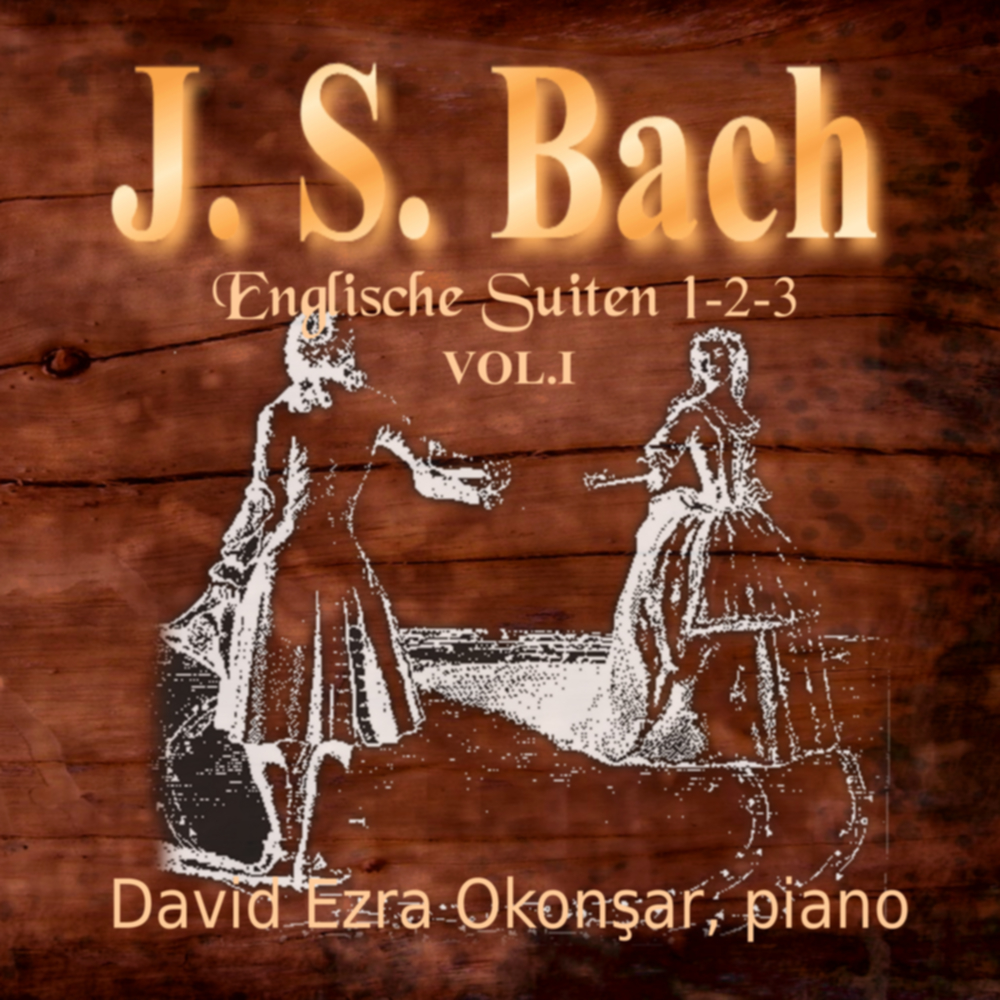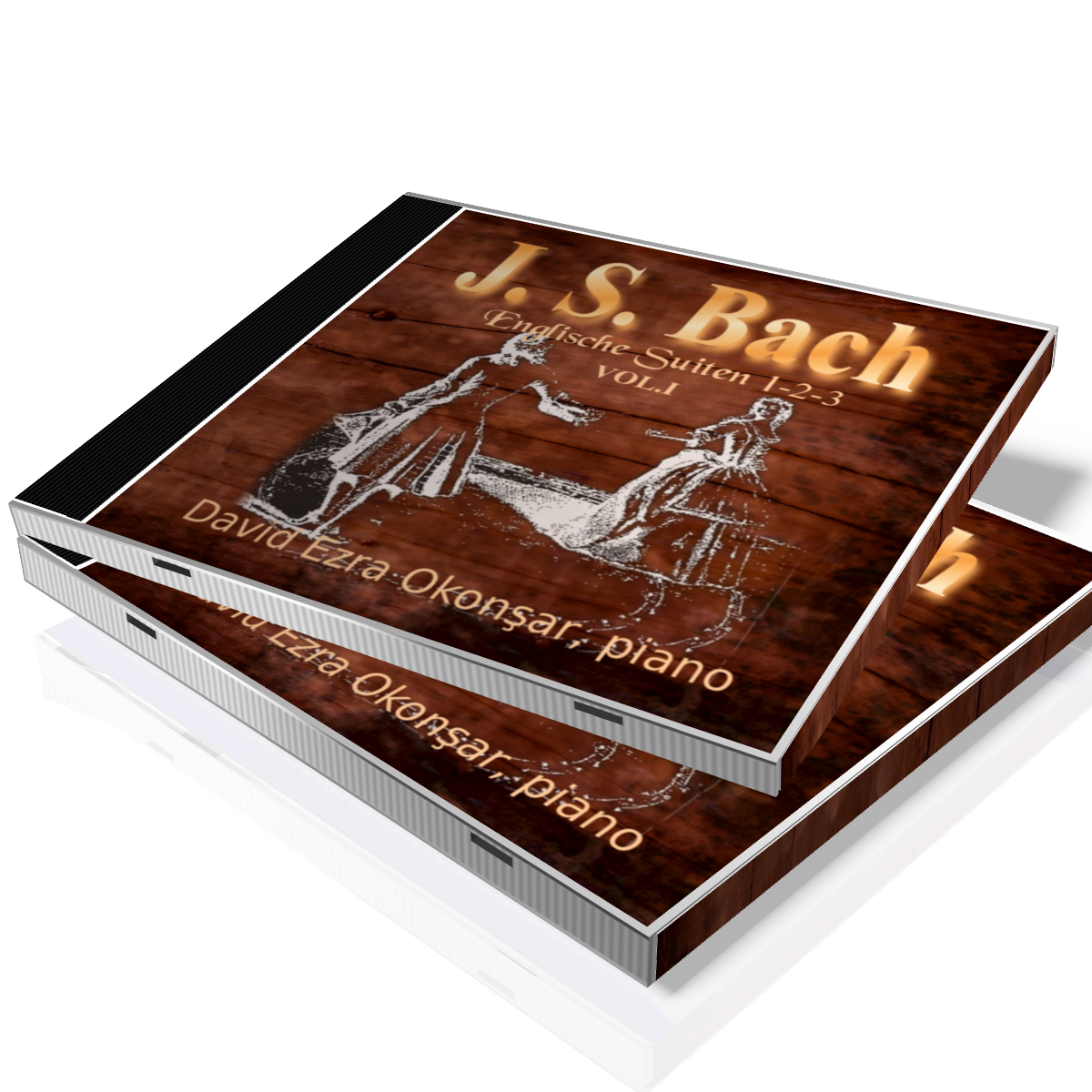Johann Sebastian Bach


|
The precise composition dates for the six English Suites, BWV 806-811, is not known. It is commonly agreed on that Bach did start working on them quite early, probably in Leipzig around 1715 and finished them up in Cöthen, around 1717-1723. The most astonishing pieces of those suites are the Preludes. They are full featured Concerto movements displaying outstanding inventiveness, brilliant keyboard écriture in flourished imitation style. According to Norbert Dufourcq, those Preludes which open each Suite are added afterwards. English Suites are quite different from each other. This may be because they were composed over a long period of time and also because they are made of some pieces composed on different occasions. The origins of the title "English" Suites is also obscure. Bach did not leave any clear information regarding that titling. J. N. Forkel, in his historical study claims that the suites are dedicated "to a rich Englishman". Karl Geiringer affirms that in composing those Suites, Bach was studying the works of Charles Dieupart (1670-1740), a French harpsichordist whose career was entirely made in England. J. S. Bach did (hand) copy the F minor Suite of Dieupart and "re-used" the Gigue in A major of the same composer as a base for the Prelude of the first English Suite in A major. It should be noted that while the French Suites did contain many "French" elements: typical dance forms and characteristic rhythms, the English ones are devoid of anything that can be said to be "English". The English Suites are more developed and more tricky to perform than the French Suites. They have a more noticeable "concertant" and virtuoso character. English Suites are organized around the traditional Suite series: Allemande; Courante; Sarabande and Gigue but include other forms as Passepied, Bourrée, Gavotte and Menuets. English Suite N.I in A Major, BWV 806
1. Prélude
2. Allemande 3. Courante I &II (2 Doubles) 4. Sarabande 5. Bourrée I & II 6. Gigue The Prélude which opens the first suite is rather a short one when compared to others of the series. Starting with a Toccata style free arpeggio opening, it evolves within a monothematic Gigue-style imitative setting. The Allemande evokes a lute-like style with many arpeggiated chords spelled out in precise rhythms. A solemn Allemande which evolves in two and three voice settings. Two Courantes is rather unusual and this first Suite is the only one which has not only two Courantes but has also the second one followed by a couple of "doubles" i.e. variations. Both are French style Courantes, very fluid and with a wandering melodic line shifting from one voice to another. Majestic chords introduce the noble Sarabande. The monothematic piece has in the middle section an improvisation-like development. Bourrées I and II: the A major first one has a souple and sinuous line elaborated in the imitation style. The second one in A Minor is more austere. The contrary motion in its two voices and the motivic inversions are to be noted. The final Gigue is entirely made up of two voices in imitation. A brisk and joyful movement in both its two sections, the second one being in inverse setting. English Suite N.II in A Minor, BWV 807
1. Prélude
2. Allemande 3. Courante I &II (altern.) 4. Sarabande 5. Bourrée I & II 6. Gigue A full featured concerto movement opens the second Suite with its brilliant Prélude. With two motives, the first one energetic and vigorous, like a tutti while the second one sounds like a solo violin part. All aspects of a concerto are here, even the short cadenza which concludes the movement. Calm and expressive, the Allemande is fully in imitation-style. Each of the two parts has its own theme, the second one is exposed six times shifting between voices. Both the Courante and the Sarabandes are noticeably in the French style. Very souple and improvisatory, the Sarabande has a "double" (variation) where the ornaments are explicitly notated. Bach uses extended pedal tones in both Bourrées. The first is a vivacious dance and the second is more restrained. The Suite ends, as usual, with a brilliant Gigue as a Finale. This particular one seems close to the Italian style with a monothematic setting. English Suite N.III in G Minor, BWV 808
1. Prélude
2. Allemande 3. Courante 4. Sarabande 5. Gavotte I & II (altern.) 6. Gigue The numerous keyboard transcriptions of Vivaldi's violin concertos Bach did in Weimar, seem to be the basis for the extensive concerto-like Prélude which begins this third Suite. With many analogies to the upcoming "Italian Concerto" (BWV 971) this precursor piece is also set on the contrasts between the tuttis (forte) and the solos (piano), although not explicitly notated here as they are in the Italian Concerto. A calm Allemande with an expressive and developed bass line which carries motives that will jump to other voices follows the exuberant Prélude. The Courante is again in the French style. Souple, elegant and light in its textures. The most expressive and highly developed Sarabande, which has its own "double", appears as the center of gravity of the entire Suite. An extremely rich harmonic écriture where numerous enharmonic settings enhance the expressiveness. The Gavottes I and II (Gavotte II is also named "Musette" in some editions) bring joy and lightness after the deep and tragic Sarabande. The charming simple Musette makes the B part in the A-B-A form in this scherzo-like movement. The Finale is a strong and brilliant Gigue in a fugato form which opposes the straight and inverted themes all throughout. English Suite N.IV in F Major, BWV 809
1. Prélude
2. Allemande 3. Courante 4. Sarabande 5. Menuet I & II 6. Gigue Rarely, J. S. Bach wrote a tempo instruction in his keyboard works. Here he did: "vitement" (in French: rapidly). Again a large and elaborated Prélude begins this suite and again, in the styles of the Italian Concerto and the fifth Brandenburg Concerto which are to come later. A simple but energetic main theme is exposed with a distance of one bar and one octave by the right and left hands. Its main features, the ascending scale and the dotted rhythms, will become the essential elements of the movement. The expressive Allemande is also very choreographic. It presents a large variety of rhythms. The gentle swinging effect of the triplets accentuates the dancing feeling of the piece. As with all his English Suites, here too, Bach uses the French style Courante, typical with its rhythmical complexity and counterpoint. Each part starts in imitation, in octave in the first section of the piece and at the fifth in the second. The Sarabande is harmonic in its concept, simultaneously solemn and simple. A simple melodic figure which functions as a theme appears every four bar, above sustained and modulating chords. Two Menuets are between the Sarabande and the final Gigue. They are to be played as A-B-A. The fast Gigue is a virtuoso piece. Its main theme, as an ascending arpeggio, jumps from voice to voice and is always present throughout the piece. The second part made with the inverted arpeggio theme, joins the original ascending one in an exuberant ending. English Suite N.V in E Minor, BWV 810
1. Prélude
2. Allemande 3. Courante 4. Sarabande 5. Passepied I & II 6. Gigue The Prélude of the fifth Suite is a monument in its elaboration and sheer duration. Evoking an organ-style écriture, it looks like a grand fugue. Two and three voice divertimento parts are full of creativity and the beautiful sections elaborated on pedal tone are to be noted. The imitation style Allemande with its moderate tempo and alluring development part in the second section is an intense piece. Even though the rhythmical complexity of this, again in French style, Courante seems less than the other ones in the series, it shines nevertheless with its harmonic elaboration. The seemingly naive theme of the Sarabande is so deeply and complexly set that it turns the piece into the expressive gravity center of the Suite. Couperin-like French Passepied's: N.1 "en Rondeau" then N.2 and again N.1 "da capo", make the bridge from the Sarabande to the final Gigue. They are swift and light as well as brilliant movements. The three-voice Gigue ends the Suite in a brilliant and virtuoso way. English Suite N.VI in D Minor, BWV 811
1. Prélude
2. Allemande 3. Courante 4. Sarabande & Double 5. Gavotte I & II 6. Gigue The last English Suite begins with a large Prélude again. This time Bach makes the connexion between the French style overture like prelude which has a more improvised aspect and German type ones that are usually more structured. It starts with an improvisatory feel of thirty-six bars "a la française" with full of fantasy and harmonic audacity. A cadenza bar indicated "adagio" connects this with the "allegro" indicated main part of the piece. This section is based on a fugue-like theme elaborated with great freedom using inversions and imitations. This is the lengthiest Prélude of all English Suites. The Allemande is rhythmically animated even though in the traditional moderate tempo. It is a melodically very rich piece. The Courante, in with two voices, is less complex than the other ones in the series but very charming. The naivete of the Courante makes a delicious transition for the amazing Sarabande. Unusually notated in 3/2 the piece employs large note values and makes its first presentation as the harmonic background upon which the elaborations and ornamentations will take place. This is done with the "Double" (the main piece's variations). All apparent or hidden elements in the first exposition: passing notes; embellishments; appoggiaturas; held (delay) notes; anticipations and pedal tones are fully expanded in the "Double". This Suite proceeds with Gavottes 1. 2. and back to 1. ("da capo") to the Final Gigue: a superb piece, extremely virtuose in three voices. |
|||||||||||
|
|
|||||||||||
|



